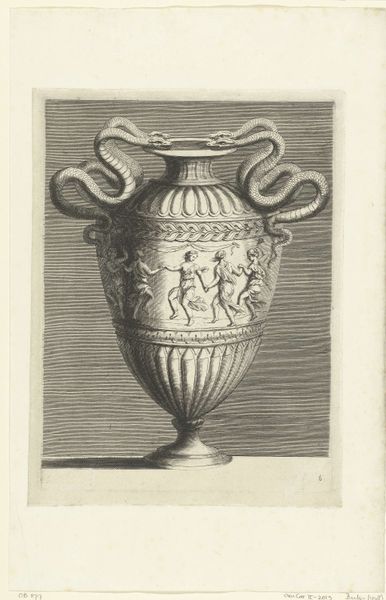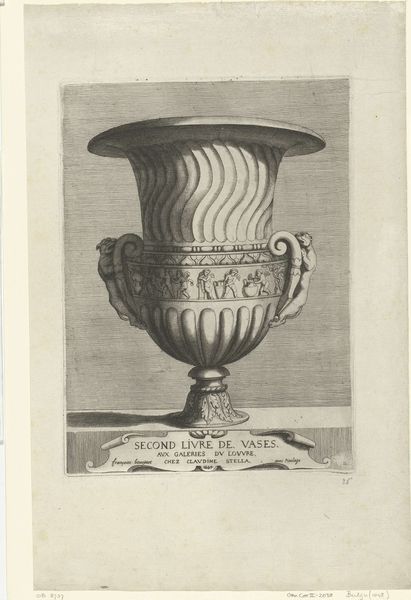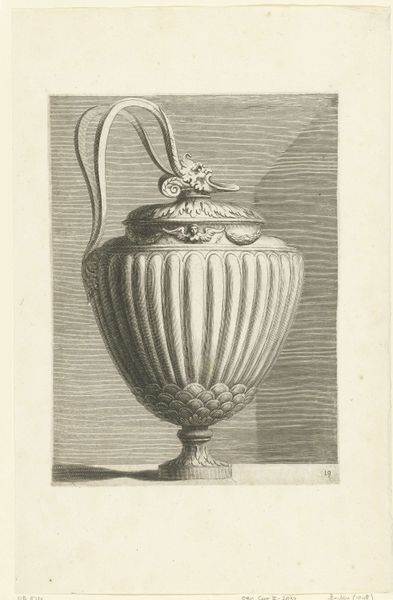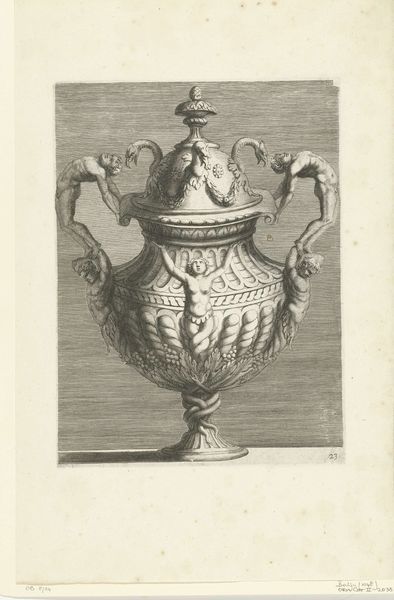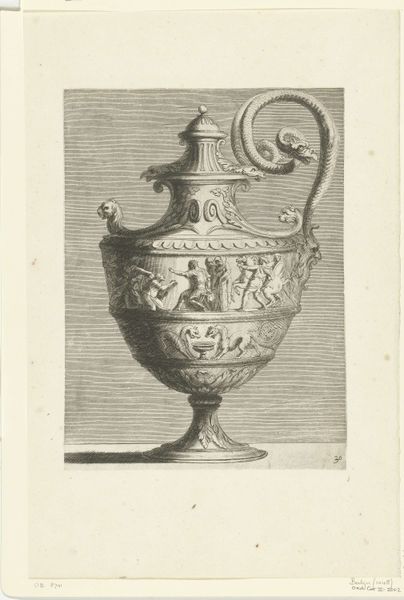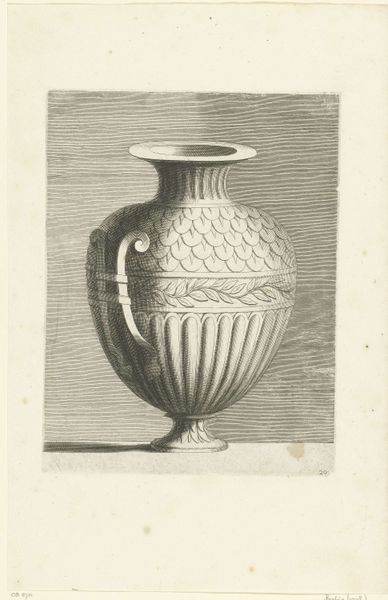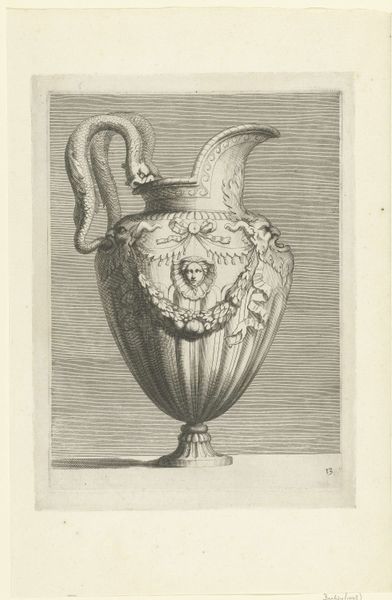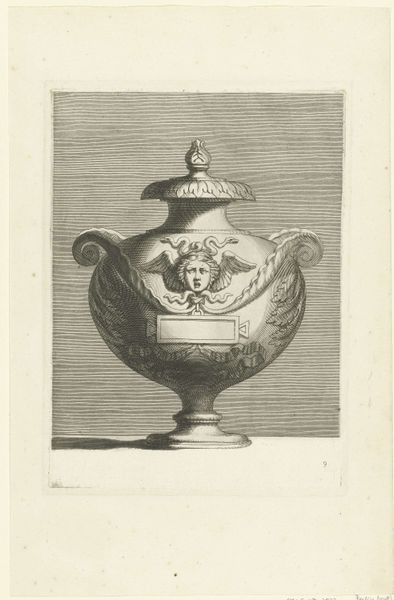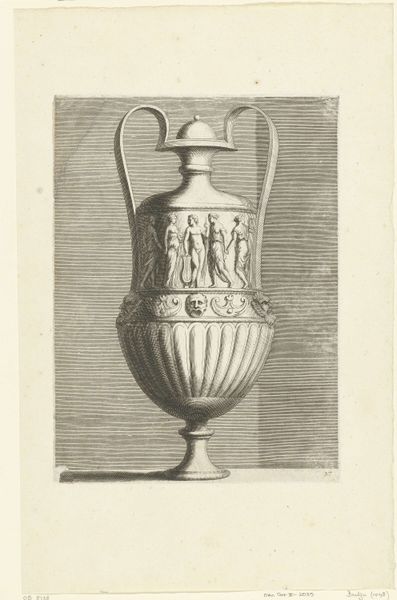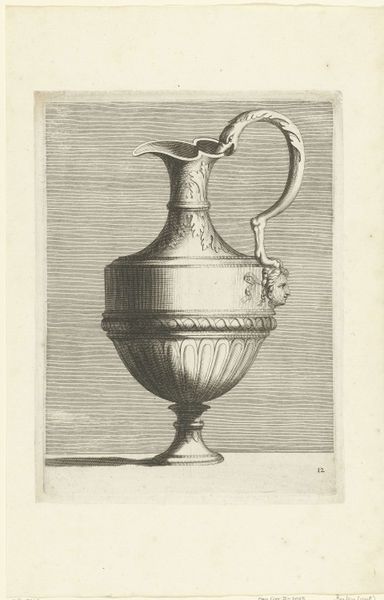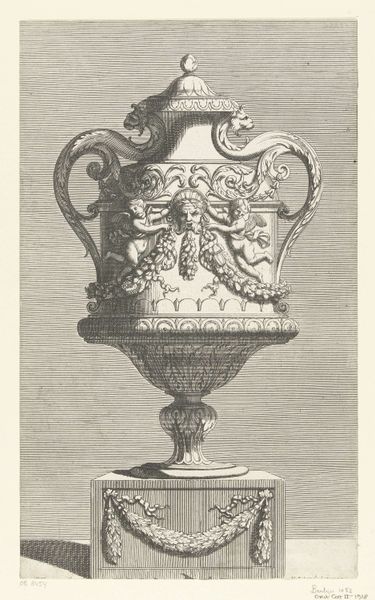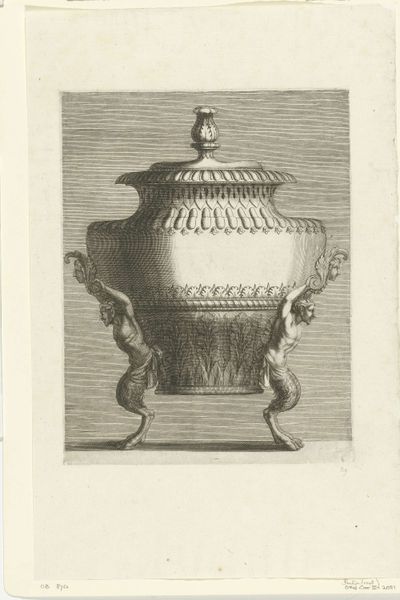
print, metal, engraving
#
baroque
# print
#
metal
#
old engraving style
#
engraving
Dimensions: height 267 mm, width 202 mm
Copyright: Rijks Museum: Open Domain
Curator: This engraving from 1657 by Françoise Bouzonnet depicts a "Vase with Two Satyr Heads." It is remarkable in its detail, considering the medium is print on metal. What are your first impressions? Editor: My initial reaction is that it exudes an air of restrained opulence, a characteristic associated with the Baroque era. Despite being monochromatic, it gives off a rather rich and dramatic effect. The satyr heads also contribute to the overall impression. Curator: Absolutely. The satyr heads bring us into dialogue with the concepts of masculine identity and power prevalent in 17th-century art and society. Satires, typically associated with wild abandon, contrast here with the rigid structure of the vase form. How might the setting in which this artwork was received have influenced the reception to such a stark visual statement? Editor: It's fascinating to consider that the Baroque, with its elaborate displays of power through art and architecture, might use even something as seemingly decorative as this to broadcast the power of the aristocracy to anyone viewing the work in palaces or in public prints like this. The vase and the choice of details in this period say a lot about who was creating it and who was consuming it. The printing and wide availability really changed the experience for viewers across social classes, but the symbol of elite society certainly carries across. Curator: The choice of subject and medium are compelling here. Printmaking allowed for dissemination and challenged the idea of the "unique" art object reserved for the wealthy elite. Bouzonnet, as a female artist, enters this field and, in her interpretation of the classic vase form, possibly opens up subversive channels that prompt us to question gendered constructions of power. Editor: A very strong point, the act of producing something at this scale challenges traditional societal notions about fine art and labor that are still pertinent to today. So it allows us to interpret our social experiences across centuries, it’s wonderful. Curator: Indeed. Understanding artworks in their intersectional historical and contemporary contexts, considering race, class and gender, as well as time and place, permits a greater depth of appreciation. Editor: Precisely! And appreciating their public function opens up even richer avenues for exploration. It shows us a glimpse into how artworks become ingrained into societal power structures that have spanned generations.
Comments
No comments
Be the first to comment and join the conversation on the ultimate creative platform.
